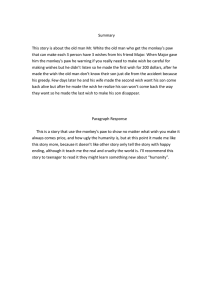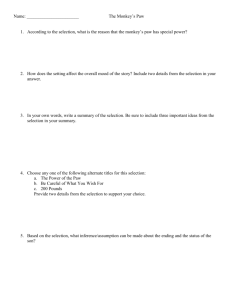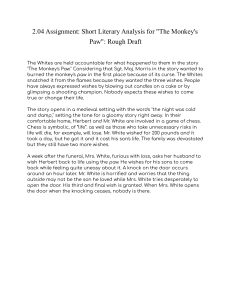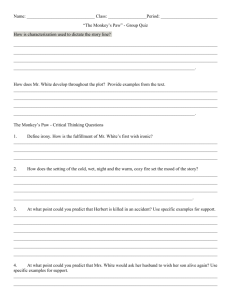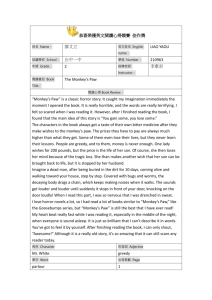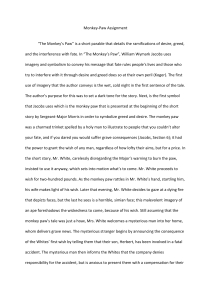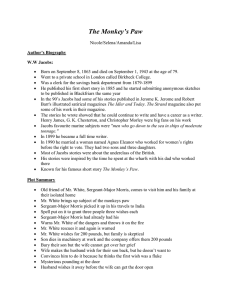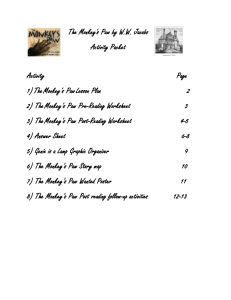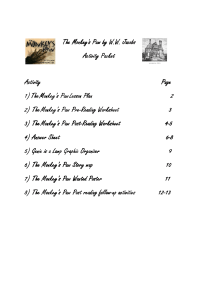Intro Samples for The Monkey's Paw and Third Wish CC Essay
advertisement
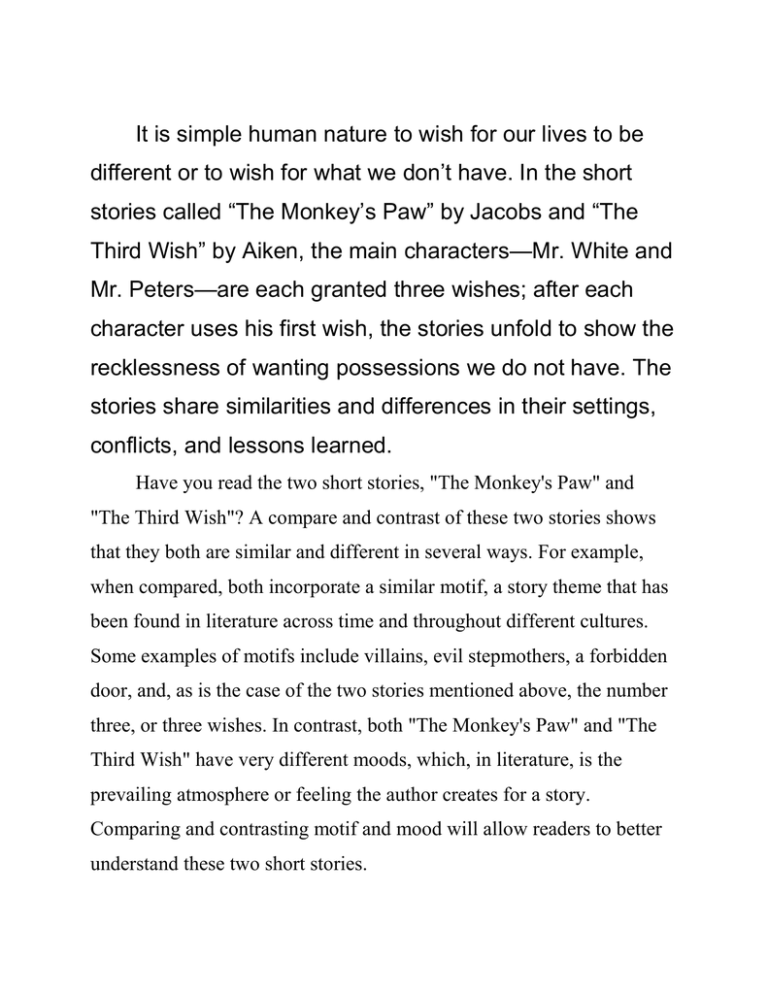
It is simple human nature to wish for our lives to be different or to wish for what we don’t have. In the short stories called “The Monkey’s Paw” by Jacobs and “The Third Wish” by Aiken, the main characters—Mr. White and Mr. Peters—are each granted three wishes; after each character uses his first wish, the stories unfold to show the recklessness of wanting possessions we do not have. The stories share similarities and differences in their settings, conflicts, and lessons learned. Have you read the two short stories, "The Monkey's Paw" and "The Third Wish"? A compare and contrast of these two stories shows that they both are similar and different in several ways. For example, when compared, both incorporate a similar motif, a story theme that has been found in literature across time and throughout different cultures. Some examples of motifs include villains, evil stepmothers, a forbidden door, and, as is the case of the two stories mentioned above, the number three, or three wishes. In contrast, both "The Monkey's Paw" and "The Third Wish" have very different moods, which, in literature, is the prevailing atmosphere or feeling the author creates for a story. Comparing and contrasting motif and mood will allow readers to better understand these two short stories. A beautiful swan is transformed into a woman. A mummified monkey’s paw moves in the palm of an old man’s hand. These events are certainly different, yet they are both part of the rising action in stories about people who are given three wishes, and with unhappy results. The main characters of both stories mean well, and yet they create sorrow. In both stories, there are symbols for these wishes. The main theme of both short stories, “The Third Wish,” by Joan Aiken and “The Monkey’s Paw,” by W.W. Jacobs, is that human beings should not attempt to interfere with fate, and it is illustrated by the characters and their wishes.
